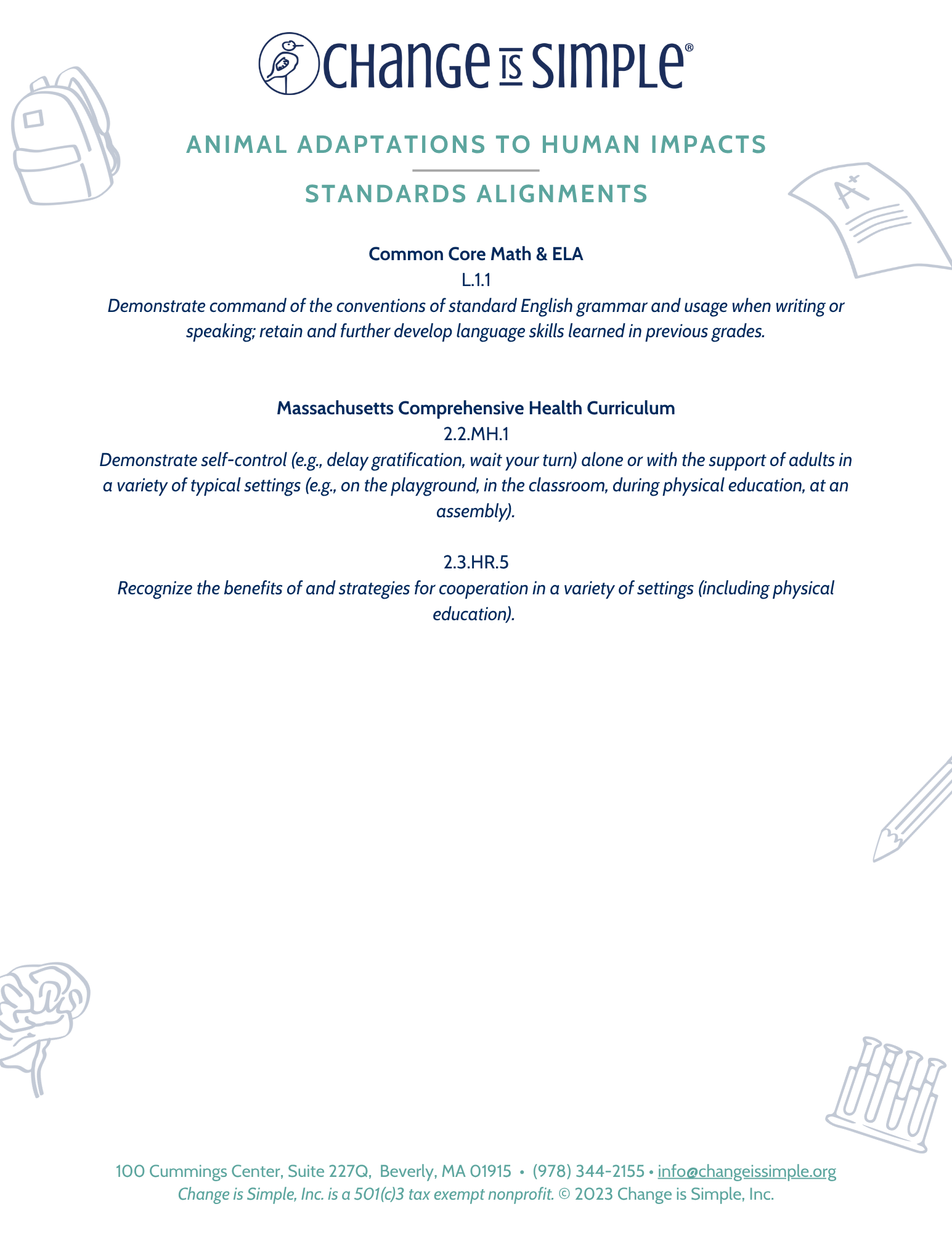ANIMAL ADAPTATIONS TO HUMAN IMPACTS
Lesson Objectives:
At the end of the workshop, students will be able to:
Learn what pollution is and why it's bad for plants and animals.
Understand how plastic pollution hurts sea creatures like Herman the hermit crab.
Think of ways to stop pollution in the ocean and at the beach, so animals like Herman can stay safe.
Essential Questions:
What is pollution, and how does it affect plants and animals?
How does plastic pollution specifically harm aquatic life in oceans and at beaches?
What can we do to help reduce pollution in the ocean and at the beach, and how can our actions benefit animals like Herman the hermit crab?
Explore our resources
Click on the images to access each resource (available as a PDF or webpage)
Take-Home Guide
Information for parents & legal guardians (available in English and Spanish).
Información para padres de familia y tutores legales (disponible en Inglés y Español).
Standards Alignments
Explore the ways our program aligns with CCSS + NGSS standards.
Vocabulary
Quiz your students on vocabulary used during our lesson!
Social Emotional Learning
Write and draw about what you would feel like if one of your friends moved away like Piper’s friends did.
Background Information
Human impacts on animal adaptations have been profound, reshaping ecosystems and influencing the evolution of various species worldwide. One significant aspect of this influence is habitat destruction and fragmentation due to urbanization, agriculture, logging, and infrastructure development. These activities often lead to the loss of critical habitats and resources for many species, forcing them to adapt to new environmental conditions or face extinction. Animals may respond to habitat loss by altering their behavior, diet, or reproductive strategies to survive in degraded or fragmented landscapes.
Furthermore, human-driven climate change is altering environmental conditions at an unprecedented rate, posing significant challenges for animal populations. Rising temperatures, changing precipitation patterns, and more frequent extreme weather events can disrupt ecosystems and alter the availability of food and shelter. In response, many species are undergoing phenotypic changes, such as shifts in body size, changes in timing of migration or breeding, and adjustments in physiological traits, to cope with these new environmental conditions. However, the pace of climate change often outstrips the ability of species to adapt, leading to population declines and range contractions for many animals
Human-caused pollution, particularly plastic pollution, poses a significant threat to marine animals. This pollution has resulted in behavioral adaptations of hermit crabs. Plastic debris, ranging from microplastics to large floating objects, contaminates marine environments worldwide, presenting a myriad of hazards to marine life. Hermit crabs, known for their habit of utilizing discarded shells as mobile homes, often encounter plastic debris in their habitats. In areas heavily impacted by plastic pollution, hermit crabs may mistakenly use plastic fragments as shells, leading to malformations, injuries, and hindered mobility.
By recognizing the intricate links between human activities and the resilience of wildlife, we can strive towards a more harmonious coexistence with the natural world, ensuring the preservation of biodiversity and the integrity of ecosystems for generations to come.








